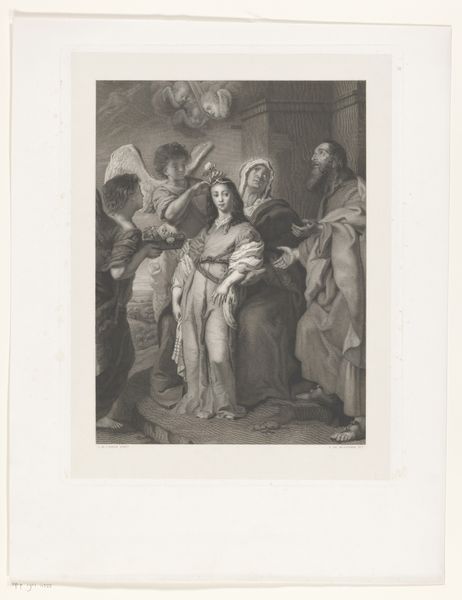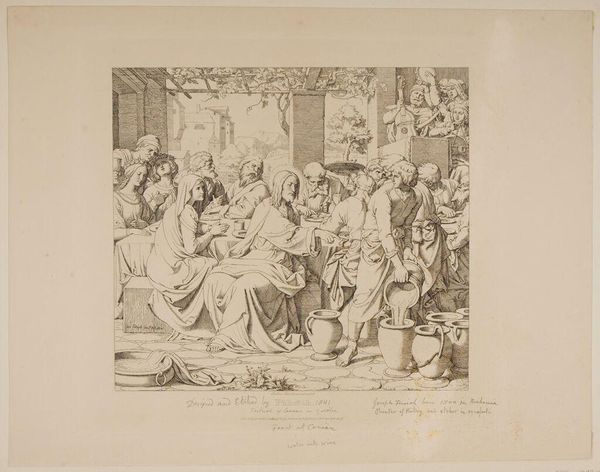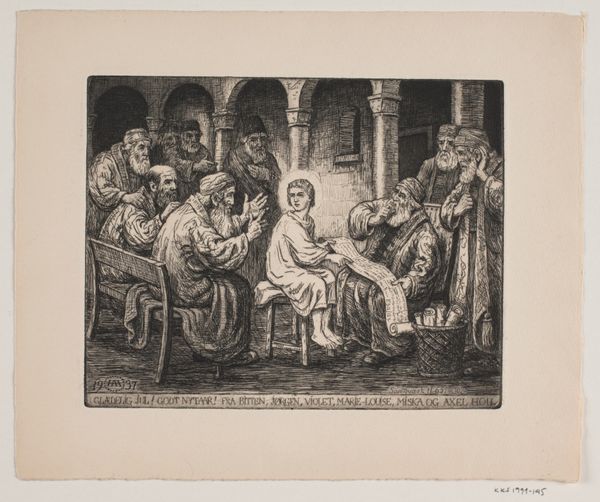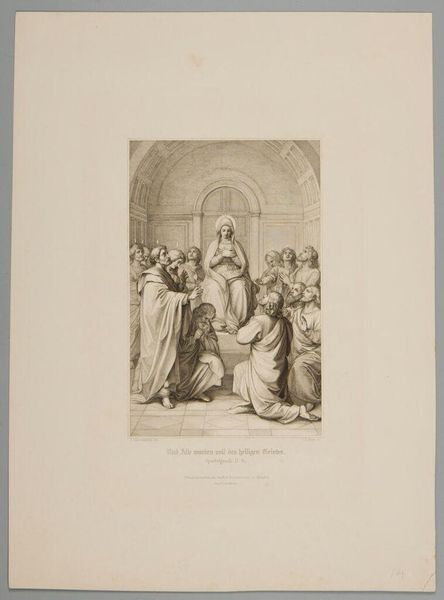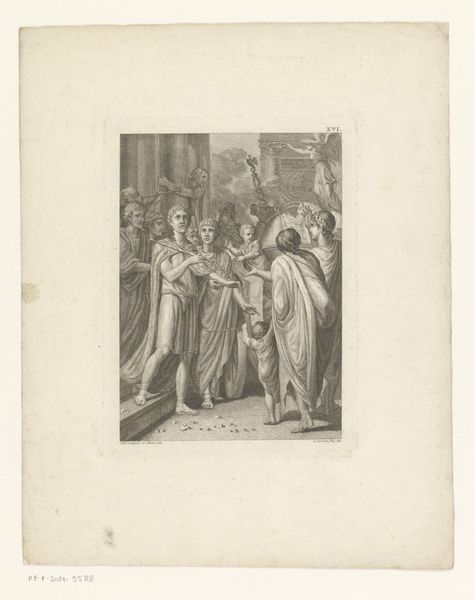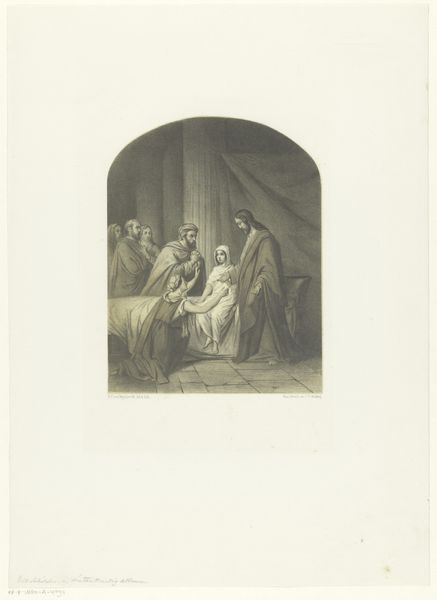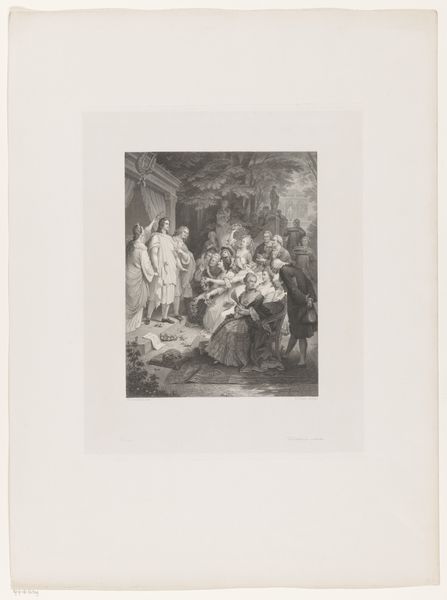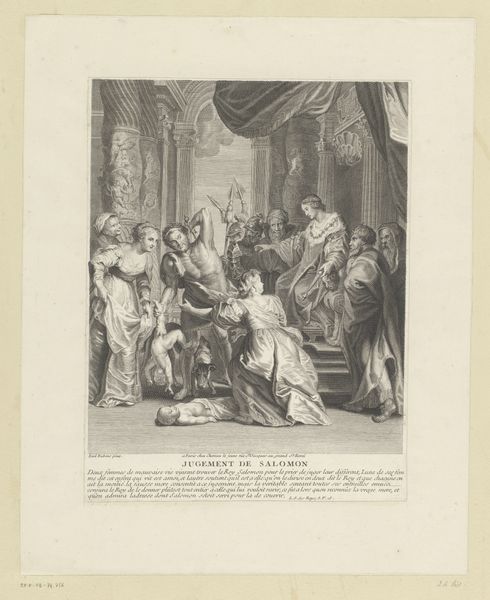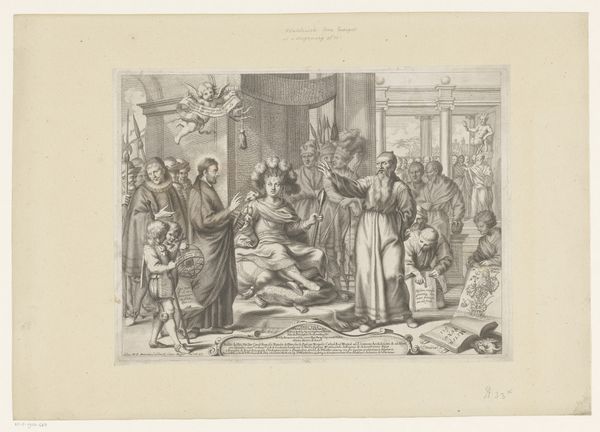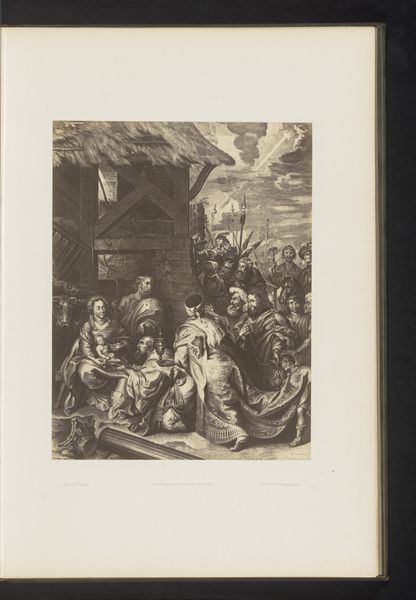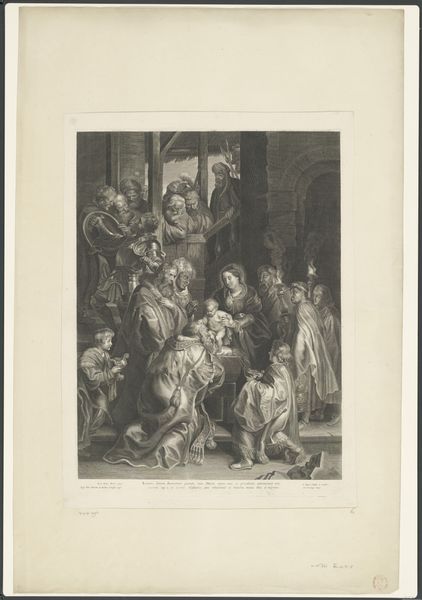
print, engraving
narrative-art
baroque
figuration
history-painting
engraving
Dimensions: 7 7/8 x 5 7/16 in. (20 x 13.81 cm) (image, sheet)11 7/8 x 9 in. (30.16 x 22.86 cm) (mount)18 1/16 x 14 1/16 in. (45.88 x 35.72 cm) (mat)
Copyright: Public Domain
Curator: Today, we’re observing "Mocking of Christ," a 17th-century engraving by Nicolaes de Bruyn. It's a rather stark depiction of a well-known biblical scene. Editor: Yes, the scene feels dense, claustrophobic even. So many figures crowded into this small space amplify the feeling of injustice. There is this pervasive, sneering cruelty palpable throughout the whole print. Curator: Indeed. De Bruyn’s command of line work is crucial here. Notice how the hatching and cross-hatching define form, particularly in the robes of the figures and Christ’s bound and seated form. The light and shadow play beautifully. Editor: And the very conscious staging. The composition, though appearing crowded, directs our eye to Christ—almost framed by the surrounding figures and the architectural background, a kind of theater of power. Who gets to wield power and why. Curator: Precisely! Observe the detail in the varied costumes and expressions. The artist has clearly worked to convey a range of reactions. Also the contrast, say, between the textures in the fabric versus the smoothness of skin creates depth. Editor: This work raises difficult questions about the normalization of violence against marginalized bodies, it offers insight into cultural structures of prejudice, and what it costs humanity. De Bruyn gives us a clear image of how fragile social structures are when faced with a challenge. Curator: Very true. By analyzing the lines, the balance of dark and light, and the expressions, we discover just how well this engraving communicates emotional and religious drama. Editor: And situates us within a history, a continuum where such dramas continue to be enacted and re-enacted. Seeing this scene invites critical thought about present injustice. Curator: It allows us to reconsider artistic merit. What seemed conventional suddenly speaks to contemporary anxieties. Editor: Precisely. A crucial artwork to contemplate regarding injustice, power, and history.
Comments
No comments
Be the first to comment and join the conversation on the ultimate creative platform.
